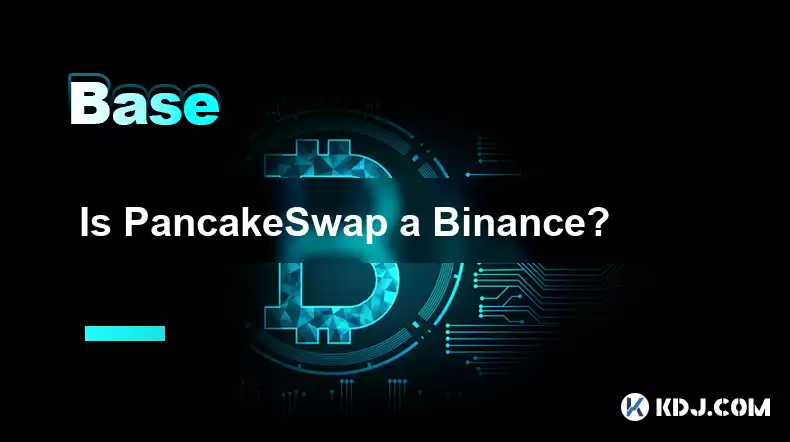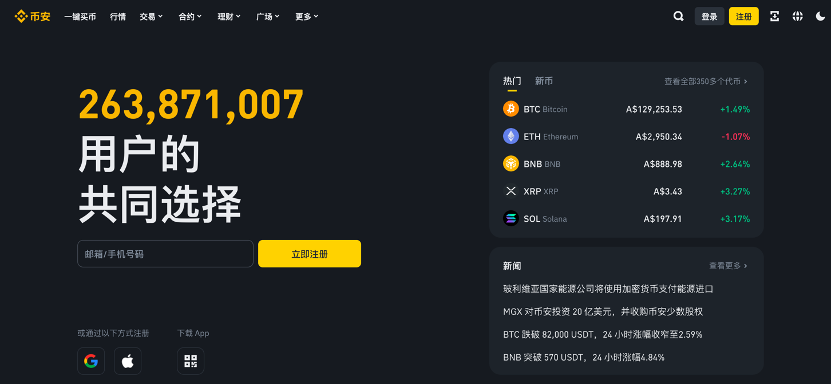-
 Bitcoin
Bitcoin $117500
2.15% -
 Ethereum
Ethereum $3911
6.19% -
 XRP
XRP $3.316
10.79% -
 Tether USDt
Tether USDt $1.000
0.01% -
 BNB
BNB $787.2
2.24% -
 Solana
Solana $175.2
4.15% -
 USDC
USDC $0.9999
0.00% -
 Dogecoin
Dogecoin $0.2225
8.40% -
 TRON
TRON $0.3383
0.28% -
 Cardano
Cardano $0.7868
6.02% -
 Stellar
Stellar $0.4382
9.34% -
 Hyperliquid
Hyperliquid $40.92
7.56% -
 Sui
Sui $3.764
7.63% -
 Chainlink
Chainlink $18.48
10.66% -
 Bitcoin Cash
Bitcoin Cash $582.1
1.88% -
 Hedera
Hedera $0.2601
6.30% -
 Avalanche
Avalanche $23.33
4.94% -
 Ethena USDe
Ethena USDe $1.001
0.02% -
 Litecoin
Litecoin $122.3
2.04% -
 UNUS SED LEO
UNUS SED LEO $8.969
-0.27% -
 Toncoin
Toncoin $3.339
0.86% -
 Shiba Inu
Shiba Inu $0.00001287
4.30% -
 Uniswap
Uniswap $10.43
7.38% -
 Polkadot
Polkadot $3.861
5.08% -
 Dai
Dai $1.000
0.02% -
 Bitget Token
Bitget Token $4.513
3.41% -
 Monero
Monero $267.7
-6.18% -
 Cronos
Cronos $0.1499
4.14% -
 Pepe
Pepe $0.00001110
5.15% -
 Aave
Aave $284.9
8.28%
Is PancakeSwap a Binance?
PancakeSwap, a decentralized exchange (DEX) on Binance Smart Chain, differs significantly from Binance, a centralized exchange, in its operational model, asset offerings, and regulatory oversight.
Mar 21, 2025 at 04:12 pm

PancakeSwap : It is a decentralized exchange (DEX) based on Binance Smart Chain. This means that it relies on blockchain technology and uses smart contracts to facilitate transactions without the participation of traditional centralized institutions. Users can directly interact with smart contracts, control funds independently, and have relatively high privacy in transactions.
Binance : As a world-renowned centralized cryptocurrency exchange, Binance is at the top of the industry. On this platform, Binance acts as a trading intermediary, responsible for matching orders between buyers and sellers. The platform has a strict currency listing review process, and users need to perform compliance operations such as identity verification, and the transaction experience is relatively closer to the traditional financial transaction model.
PancakeSwap : Uses automatic market maker (AMM) mode. Simply put, it relies on liquidity pools to provide the liquidity required for trading. Users can inject two cryptocurrencies into the liquidity pool to form a trading pair. For example, when you inject a certain amount of CAKE (native tokens for PancakeSwap) and BNB (native tokens for Binance Smart Chain), it provides liquidity for the CAKE-BNB trading pair. When trading, the price is determined based on the ratio of the two assets in the liquidity pool and the specific algorithm, rather than on the order book like traditional exchanges.
Binance : Use order book mode. The platform records orders at different prices between buyers and sellers. When the price of the buyer and seller matches, the transaction can be completed. For example, someone wants to sell Bitcoin for $5,000, and someone is willing to buy it at this price, and Binance will match the deal. In this mode, the transaction price is clear and intuitive, and the transaction execution speed is usually faster.

PancakeSwap : Mainly trades tokens based on Binance Smart Chain. Its native token CAKE has many uses, such as participating in liquidity mining to obtain income, and using it to govern voting to determine the development direction of the platform. In addition, there are a large number of emerging project tokens on the platform with innovative concepts. Most of these projects are issued by startup teams in the blockchain field, with high potential benefits, but at the same time, the risks are relatively large.
Binance : The types of assets supported are extremely rich, covering the world's mainstream cryptocurrencies, such as Bitcoin (BTC), Ethereum (ETH), etc., as well as many niche but potential crypto assets. Binance also provides fiat currency and cryptocurrency trading pairs to facilitate users to purchase cryptocurrencies using fiat currency, which is not available in many decentralized exchanges.
PancakeSwap : For users with certain blockchain knowledge, the operation is relatively simple. However, due to its decentralized nature, users need to manage important information such as private keys by themselves. Once the private key is lost, the assets will not be retrieved. Moreover, during the transaction process, users may encounter problems such as network congestion, resulting in transaction delays and large fluctuations in handling fees. They need to have a certain understanding of concepts such as Gas fees (blockchain transaction fees) in order to better conduct transactions.

Binance : The user interface is friendly, the operation process is relatively standardized, making it easy for novices to get started. The platform provides detailed transaction guides and customer service support. When encountering problems, users can contact customer service through various channels to obtain help. At the same time, Binance's trading system has been optimized for many years, with fast trading speed and high stability, which can meet the trading needs of different users.
PancakeSwap : The decentralized feature makes its security dependent to a certain extent on the security of smart contracts. Although smart contracts have been audited, there is still a risk of being hacked, such as smart contract code vulnerabilities that may lead to theft of user assets. Since it is not directly regulated by traditional financial regulatory agencies, it will be relatively difficult for users to protect their rights once problems arise. However, its transaction records are open and transparent, and all transactions are recorded on the blockchain, which are highly traceable.
Binance : As a centralized exchange, it is strictly regulated by financial regulatory agencies in many countries and regions. The platform adopts a variety of security measures, such as multi-signature, cold wallet storage of most assets, etc., to ensure the security of user assets. At the same time, the intervention of supervision has enabled the platform to perform well in compliance, and the rights and interests of users in the transaction process are protected by law to a certain extent. But the centralized architecture has also made it the target of hacker attacks, and hacker attacks have occurred in history, resulting in loss of user assets.
Disclaimer:info@kdj.com
The information provided is not trading advice. kdj.com does not assume any responsibility for any investments made based on the information provided in this article. Cryptocurrencies are highly volatile and it is highly recommended that you invest with caution after thorough research!
If you believe that the content used on this website infringes your copyright, please contact us immediately (info@kdj.com) and we will delete it promptly.
- Stablecoins, Hong Kong, and On-Chain Finance: Navigating the Regulatory Maze
- 2025-08-08 12:30:12
- Tron's Sell-Off Spurs Altcoin Shift: What's Next for TRX?
- 2025-08-08 08:30:12
- Euler, DeFi, and Coinbase: A New York Minute on the Latest Buzz
- 2025-08-08 12:30:12
- RUVI Presale: Is the Growth Potential Real?
- 2025-08-08 09:10:12
- Sleep Token's US Takeover: Thornhill Rides the 'Even In Arcadia' Wave
- 2025-08-08 08:30:12
- FTT Token's Wild Ride: Creditor Repayments vs. Market Drop - A New Yorker's Take
- 2025-08-08 07:10:12
Related knowledge

How are flash loans used?
Aug 08,2025 at 01:08pm
Understanding Flash Loans in Decentralized FinanceFlash loans are a unique innovation within the decentralized finance (DeFi) ecosystem, allowing user...

What are common crypto trading strategies?
Aug 08,2025 at 12:42pm
Understanding Trend Following in Crypto TradingTrend following is one of the most widely adopted crypto trading strategies due to its simplicity and a...

How to read a crypto chart?
Aug 08,2025 at 10:35am
Understanding the Basics of a Crypto ChartA crypto chart is a visual representation of the price movements of a cryptocurrency over time. These charts...

What is the difference between CeFi and DeFi?
Jul 22,2025 at 12:28am
Understanding CeFi and DeFiIn the world of cryptocurrency, CeFi (Centralized Finance) and DeFi (Decentralized Finance) represent two distinct financia...

How to qualify for potential crypto airdrops?
Jul 23,2025 at 06:49am
Understanding What Crypto Airdrops AreCrypto airdrops refer to the distribution of free tokens or coins to a large number of wallet addresses, often u...

What is a crypto "airdrop farmer"?
Jul 24,2025 at 10:22pm
Understanding the Role of a Crypto 'Airdrop Farmer'A crypto 'airdrop farmer' refers to an individual who actively participates in cryptocurrency airdr...

How are flash loans used?
Aug 08,2025 at 01:08pm
Understanding Flash Loans in Decentralized FinanceFlash loans are a unique innovation within the decentralized finance (DeFi) ecosystem, allowing user...

What are common crypto trading strategies?
Aug 08,2025 at 12:42pm
Understanding Trend Following in Crypto TradingTrend following is one of the most widely adopted crypto trading strategies due to its simplicity and a...

How to read a crypto chart?
Aug 08,2025 at 10:35am
Understanding the Basics of a Crypto ChartA crypto chart is a visual representation of the price movements of a cryptocurrency over time. These charts...

What is the difference between CeFi and DeFi?
Jul 22,2025 at 12:28am
Understanding CeFi and DeFiIn the world of cryptocurrency, CeFi (Centralized Finance) and DeFi (Decentralized Finance) represent two distinct financia...

How to qualify for potential crypto airdrops?
Jul 23,2025 at 06:49am
Understanding What Crypto Airdrops AreCrypto airdrops refer to the distribution of free tokens or coins to a large number of wallet addresses, often u...

What is a crypto "airdrop farmer"?
Jul 24,2025 at 10:22pm
Understanding the Role of a Crypto 'Airdrop Farmer'A crypto 'airdrop farmer' refers to an individual who actively participates in cryptocurrency airdr...
See all articles

























































































